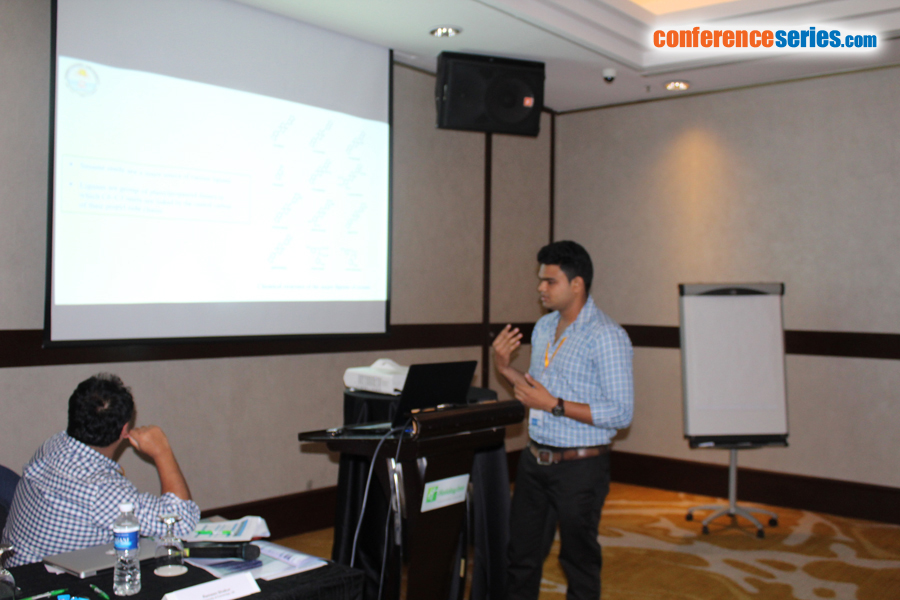
Kishan Chandra
Pondicherry University, India
Title: Cloning and Expression of CYP81Q1 from Sesamum indicum L.
Biography
Biography: Kishan Chandra
Abstract
Sesamum indicum L. commonly known as sesame is an important oilseed crop grown for its high nutritional value. It has high oil and protein content. In addition, the seed is a source of the natural antioxidants tocopherol and lignans. Lignans are phenylpropanoid dimers that occur in various forms in plants. Sesamin is the major lignan of sesame and is prescribed as a dietary fat-reduction supplement. It is also known for antioxidant, anti-estrogenic and anticancer properties. Synthesis and metabolism of the lignan in plants is still unknown, though there are many propositions of pathways reported. A dirigent protein and a protein expressed by CYP81Q1 have been reported to be involved in the conversion of conferyl alcohol to pinoresinol which is subsequently converted to sesamin. The CYP81Q1 gene product is reported to be a single enzyme having dual catalytic activity and is responsible for conversion of pinoresinol into piperitol and then piperitol to sesamin. Therefore, it was conveniently names as piperitol/sesamin synthase (PSS/SSS) gene. The main objective of this research is to characterize this important gene from S. indicum by cloning and expression. Total RNA was isolated from the seeds of S. indicum at different stages of seed development and cDNA was synthesized. Using cDNA as template the CYP81Q1 gene was amplified, cloned in to pET28a vector and expressed in E. coli. The protein was purified using His-tag based column. cDNA synthesized from RNA showed amplification of the CYP81Q1 confirming expression of the gene in developing seeds. It was then purified and assayed in vitro by incubation of the enzyme with of known amounts of the substrates (pinoresinol and NADPH) by following their conversion to piperitol and/or sesamin by HPLC. It is intended to study the structure and function of this protein and its role in plant defense. We also intend to develop PSS/SSS gene knock-out system in Sesame using CRISPR-Cas9 tool to understand the function of this important gene in plant physiology.



